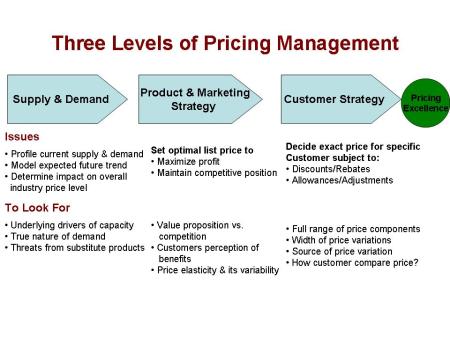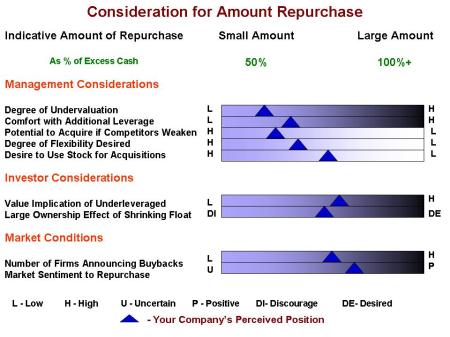Every organization or banks main aim or motto is to maximize shareholders value. However shareholders were always concern about financial distress situation where they have to dilute their share to pay debt holders or govt. need to step in and use taxpayers’ money to bail out banks/institutions.
We have faced these kind of similar situation during 2008 financial crisis where billion of $ i.e. tax payers money were used to bail out several banks. How to undo this kind of financial distress situation & avoid using tax payers’ money? One answer to this question is adding contingent capital (coco bonds) in capital structure.
What is contingent capital? Contingent capital is a debt that converts automatically to equity after some triggering event like decline in the market value of equity or capital below threshold limit. Contingent capital is likely to play a very important role in new BASEL III agreement. As per estimate banks need to issue $ 1 trillion of contingent capital to replace existing security that no longer qualified as regulatory capital.
However generally contingent capital (coco bonds) are tied with certain regulatory ratio like capital ratio (core Tier 1 capital), once the banks breaches the ratio then the debt automatically gets converted into equity to avoid financial distress situation. However problem with this concept is that it is regulatory based not market based and it transfers wealth from shareholders to bondholders and kills the main motto maximizing shareholders value (Creating value for shareholders means creating value for all the stakeholders) as conversion takes place at predefined price or at current market rate.
Capital ratios are calculated on quarterly basis and doesn’t provide true market impact of current situation & can’t handle market manipulation properly.
Mean & Median (Core Tier-1 Ratio in 2008) of 50 major banks (%)
|
March 31 |
June 30 |
Sept. 30 |
Dec. 31 |
|
|
Mean |
8.07 |
8.14 |
8.16 |
9.12 |
|
Median |
7.88 |
7.92 |
7.89 |
9.14 |
By comparing September 30 ratio with March 31 and June 30 ratio we can hardly make out occurrence of any financial distress situation but market reality was totally different as we saw during the crisis.
COCO bond seems ideal instrument to maximize shareholders value however they are not. In February 2011 Credit Suisse issued a coco bond that gets converted into equity whenever bank’s core tier 1 capital falls below 7%. However regulator can also force conversion if it sees that credit Suisse will need public fund to avoid insolvency. The conversion price was fixed at minimum of $ 20. As per these characteristics this bond seems risky.
First, trigger is based on capital ratio which is an accounting number therefore will be different from the market based measure of financial leverage, especially during financial crisis. Hence, there is no way to predict stock price at the time of conversion.
Second, if the stock price at the time of conversion is less than $ 20 then bondholders will incur significant loss.
Third, the possibility that regulators can force conversion before the trigger is reached creates an additional risk which is difficult to price. Though the bond was successful among retail investor but its base was very limited due to its riskiness.
Better contingent capital should be linked to current market situation and triggers are based on current stock price / market value of asset.
Generally market based trigger are criticized as they create instability. Bondholders has incentive to short sell shares to trigger conversion and at the same time fear of huge dilution makes shareholders sell their share and create death-spiral for a company.
What’s the challenge?
Main challenge in issuing these kinds of debt instrument is that instruments should carry minimum risk so that it can be catered to mass risk-averse investors and simultaneously protecting the motto of maximizing shareholders value. In normal convertible bonds wealth gets transferred from equity holders to debt holders. Shareholders don’t prefer these instruments in company’s capital structure.
What will be the ideal instrument that avoid share dilution, protect the money of contingent bondholders and handle market manipulation or panic perfectly?
CALL OPTION MARKET TRIGGER CONVERTIBLE (COMTC) BOND can be ideal contingent bond that can be issued above 20-30 basis point of risk-free bond and caters to mass risk-averse investors who know they will be paid at the time of financial distress situation.
How does COMTC works?
COMTC bonds target to risk-averse investors and provides return above normal risk free bond. This instrument carry forced right to get paid at the time of financial distress situation. It carries a conversion trigger point which is less than then current market price. However in order to avoid market manipulation & panic shareholders got pre-emptive rights to buy-back shares from bondholders so that they can avoid any conversion that results from market manipulation or panic. At the same time in order to avoid huge dilution shareholders got the right to issue share (right issue) at the same conversion price and pay back the bondholders and maintain proper capital structure. As bondholders will be paid back they have no incentive to hedge their investment by shorting the stock when the leverage ratio approaches the trigger point.
Why conversion trigger price is lower to current market price?
Conversion price of COMTC bond should be less than the trigger price. Suppose the market price of $ 10 share will come down to $ 5 during financial distress situation. In this case conversion price of the bond should be fixed at below trigger price say $ 1. We can understand this with an example.
Example: Senior Debt – $ 1000
Equity Capital – $ 10*7 = $ 70 (7 share with face value of $ 10)
COMTC – $ 30
Scenario 1 (Financial Distress Situation) = Market Price $ 5
Conversion Price = $ 5 (Conversion price = Market Price)
New diluted Share price = (6*5+7*5)/13 or (30+35)/13 or 65/13 = $ 5 per share
(Assume that repayment will be made after conversion)
Total Value of Assets = 1000+65 = $ 1065
Shareholders will exercise his option of right issue & pay back bondholder at its par value till the time value of assets is $ 1065. If value goes below $ 1065 shareholders will not exercise his call option and all the value above $ 1000 will be shared between bondholders & shareholders at the time financial distress or bankruptcy.
Scenario 2 (Financial Distress Situation) = Market Price $ 5
Conversion Price = $ 1
New diluted Share price = (7*5+30*1)/ (7+30) or (35+30)/37 or 65/37 = $ 1.76 per share (Assume that repayment will be made after conversion)
Total Value of Assets = 1000+65 = $ 1065
Shareholders will exercise his option of right issue & pay back bondholder till the time value of assets is $ 1037 or market value of share is $1. If the market value goes below $1 or total assets value becomes less than 1037 shareholders will not exercise his call option and all the value above $ 1000 will be shared between bondholders & shareholders.
Thus with $ 1 conversion price, bondholders become shareholder when value falls below $ 1037. With $ 5 conversion they become shareholders when value falls below $ 1065. Lower conversion price clearly reduces riskiness of convertible debt which lowers financial distress and makes the security more marketable among fixed income investor.
How COMTC bonds are different from COCO bonds?
|
COMTC BONDS |
COCO BONDS |
| COMTC bonds are market triggered bonds that provides true financial leverage | Normally COCO bonds are regulatory triggered bond i.e. capital ratio. Such mechanism are accounting measure and doesn’t work when company’s capital structure deteriorate rapidly |
| Regulators can’t intervene as it is totally market based | Regulators are aware that capital ratios are stale, they may be tempted to intervene and pull the trigger themselves and this regulatory risk may difficult to asses, even for major credit rating agency. |
| COMTC bonds are risk-averse bond, it can easily marketable & cater to mass market. | COCO bonds are difficult to market as investors know that capital ratio doesn’t provide true picture so in order to mitigate risk they demand higher spread however issuer thinks firms financial distress risk is lower and reluctant to pay higher risk premium. |
Conclusion
COMTC bonds are risk-averse bond that can be targeted to mass market as it provides assurance that bondholders will be paid at the time of financial distress. These are market related bonds triggered at certain market price or market value of assets. It considers current financial leverage and provides absence of regulatory intervention. All the normal bonds carry tax deductible interest rate and in order to make COMTC bonds attractive it should also be tax deductible. These bonds can be issued by any institutions apart from bank to prevent financial distress situation and maintain optimal capital structure.
COMTC bonds are superior to COCO bonds and one of the best debt instruments to be part of organizations/banks capital structure.









